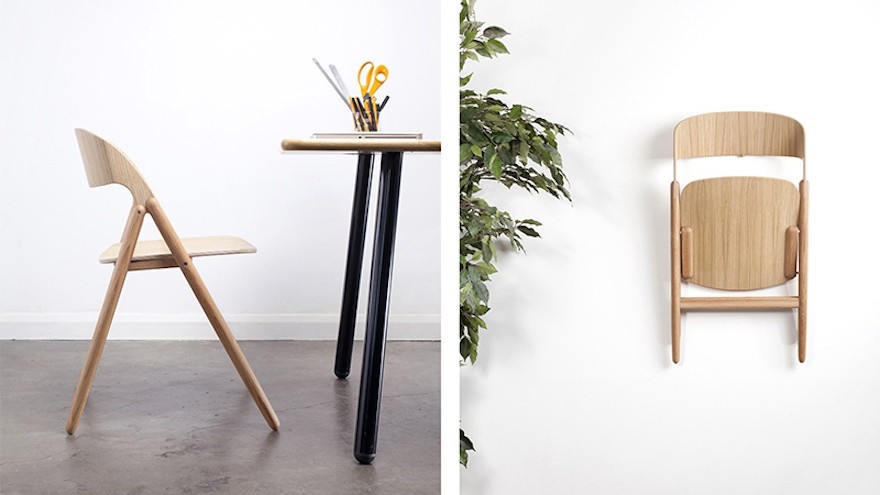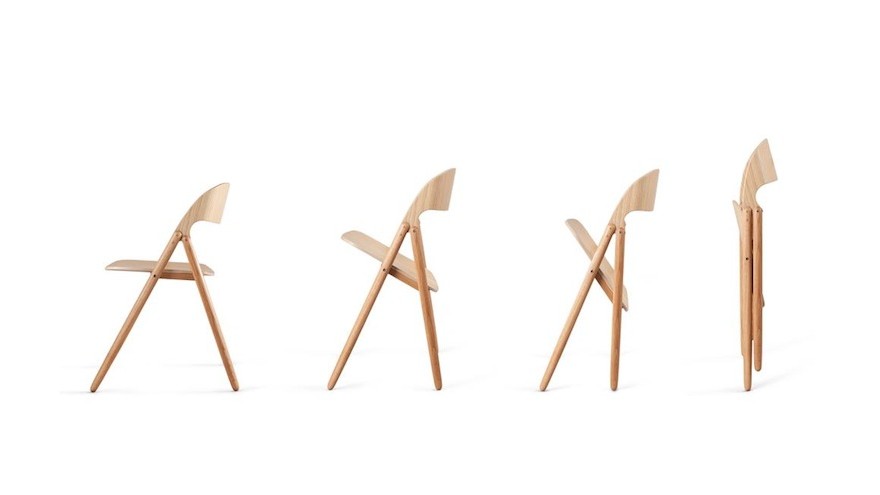David Irwin's modern take on the classic folding chair is included in the exhibition Tools for Everyday Life by Nothumbria University at the International Contemporary Furniture Fair (ICFF), which opens on Saturday 16 May 2015.
Born in Northern Ireland and now based in Newcastle, Irwin is a design graduate of Northumbria and participated in its Designers in Residence Programme in 2010. He creates contemporary furniture and product design for manufacturers and design-led companies such as Habitat, Deadgood and Gardiner Richardson.
His studio shares the historical inspiration behind his new design:
"The folding chair dates back as early as the Vikings or Ancient Egypt, although the comparison to modern designs is clearly very different. The original folding chairs resembled a cross-shaped frame with material stretched across as the seat, which were updated in the 15th and 16th centuries to add an arm and head rest. This alteration saw the beginning of the folding chair shape we are familiar with today."
His historical precedents include Giancarlo Piretti's Plia folding chair, a lightweight plastic seat made in 1968 boasting a clever folding hinge that joins the three sections and acts as the folding mechanism. He then looks to Habitat's inexpensive, yet iconic Macadam chair – a simple metal chair that offere additional, temporary seating in 1970s Britain.
Irwin gives a modern update to this traditional concept. Despite its connotations of makeshift seating, the folding chair becomes a sensual crafted object in his iteration. It's lightweight and easy to collapse and move around, and can be stored in condensed stacks that take up minimal space.
The chair features a smooth sweeping transition from the turned oak legs into the formed backrest, which also doubles as the mount for the pivot from where the back leg rotates.
The chair's seat and back are made of birch ply veneered in oiled oak and with stainless steel fixings. "The fixings contained on the underside of the chair slide along the grooves within the back legs to present a graceful silhouette with clean flowing lines, which looks as good folded away for storage as it does when open and in use," he says.
Suitable for both domestic and contract use, the solid oak frame is robust enough for use in meeting, conference and waiting rooms.








